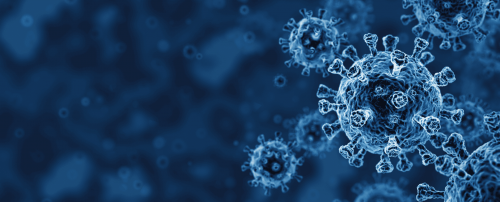
Zoonoses, when animals contaminate humans
How are zoonoses transmitted?
Zoonoses can be transmitted to humans in a variety of ways. Some pathogens are transmitted through direct contact between humans and animals (rabies and avian influenza viruses, etc.), and some through the environment, whether via water (enteric bacteria and viruses) or soil (tetanus, anthrax, etc.). Others are transmitted through the consumption of contaminated food of animal origin, or through faeces (Salmonella, Toxoplasma, Anisakis parasitic worm, etc.). Lastly, some zoonoses are transmitted by an arthropod vector (such as mosquitoes or ticks); this is the case with Lyme disease and West Nile virus.
Some pathogens of zoonotic origin can acquire the ability to spread directly from human to human, without passing through an animal. The pathogen then loses its strictly zoonotic nature. This is the case, for example, with certain flu viruses or coronaviruses that cause seasonal colds.
What types of diseases are involved?
The term "zoonosis" covers a very wide variety of diseases: some affect the digestive system (salmonellosis, campylobacteriosis, etc.), others the respiratory system (avian and swine flu, coronaviruses, etc.), the liver (hepatitis E virus), the nervous system (rabies, West Nile), or several organs at once. While some zoonotic pathogens also affect animals, with others, the carrier animals are asymptomatic. This is for example the case with Campylobacter or, to a lesser extent, Salmonella.
The severity of these diseases in humans can vary greatly depending on the disease itself (the degree of virulence of the pathogen responsible) but also on the infected individual, who may have particular susceptibility to these pathogens. This is often the case for people with a weak immune system (immunocompromised individuals, those undergoing immunosuppressive treatment, young children, the elderly, pregnant women).
"60% of current infectious diseases in humans are zoonoses. It is not possible to treat human health without paying attention to animal health, and vice versa," says Gilles Salvat, Scientific Director of Animal Health and Welfare at ANSES.
What is ANSES doing about zoonoses?
Research to improve understanding of zoonoses
In its laboratories, ANSES conducts research programmes on zoonoses and develops diagnostic tools for the detection and surveillance of these pathogens. This work advances our knowledge of the pathogens and how they interact with hosts (virulence factors, mechanisms of action, etc.), of factors influencing crossing of the species barrier, and of innovative control methods, including vaccines, all of which help us better understand and control zoonoses.
The Laboratory for Food Safety and the Ploufragan-Plouzané-Niort Laboratory also study biological agents that can be transmitted through food. Some of them are zoonoses, such as Salmonella, Campylobacter, Bacillus, Clostridium, Staphylococcus and Listeria.
Support for monitoring and management measures
Some of the Agency's laboratories also have national, European and international reference mandates on certain zoonoses. As such, they coordinate the official surveillance networks for a number of zoonotic agents (Salmonella, Listeria, rabies, bovine tuberculosis, etc.). They are therefore responsible for the analyses carried out to detect the pathogens. They also conduct research to improve detection methods.
In addition, through the expert appraisals conducted within its Expert Committees on "Animal health" and "Assessment of the biological risks in food", the Agency assesses the risks associated with micro-organisms, including those causing zoonoses. This assessment work can be used by the public authorities for drafting regulations on the management of risks associated with these agents. In the event of an outbreak, the Expert Committees can also issue opinions on the risks of the pathogen spreading within animals and the risks of transmission to humans, as well as on the control measures to be put in place to limit these risks.

Going further
Zoonoses : comprendre les maladies transmissibles de l’animal à l’homme
Les zoonoses, ces maladies transmissibles de l’animal à l’humain, sont au cœur des enjeux de santé publique et de santé animale. Rage, grippe aviaire, tuberculose bovine, ou encore coronavirus : de nombreux agents pathogènes - bactéries, virus ou parasites - circulent entre les animaux domestiques, la faune sauvage et les êtres humains. Chaque année, plusieurs nouvelles maladies humaines émergent à partir du monde animal, soulignant l’importance d’une surveillance renforcée. Ce dossier vous propose un tour d’horizon des principales zoonoses surveillées en France, des travaux de recherche menés pour mieux comprendre leur transmission, et des actions de l’Anses pour protéger à la fois la santé des animaux, des éleveurs, des vétérinaires et du grand public.


